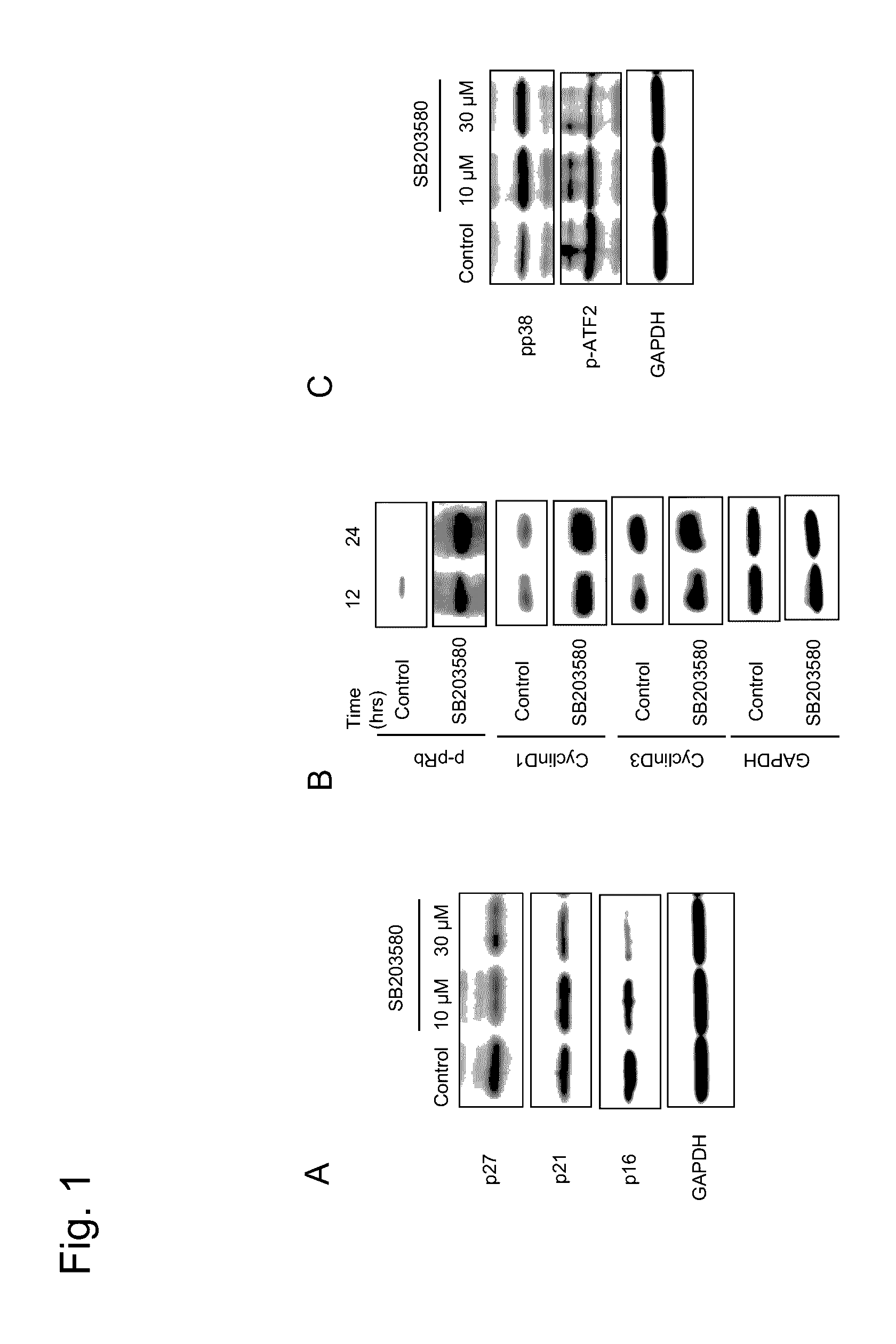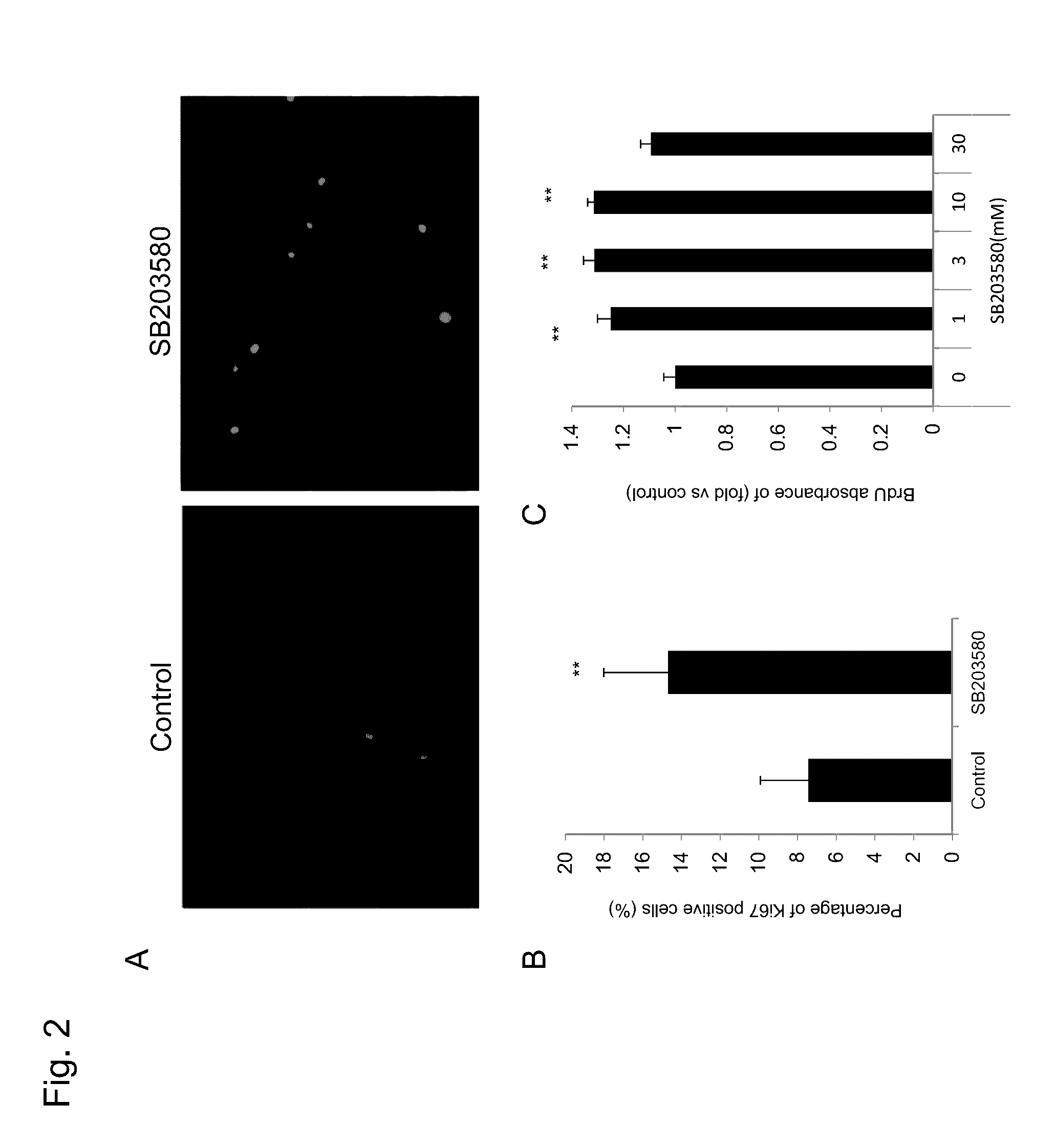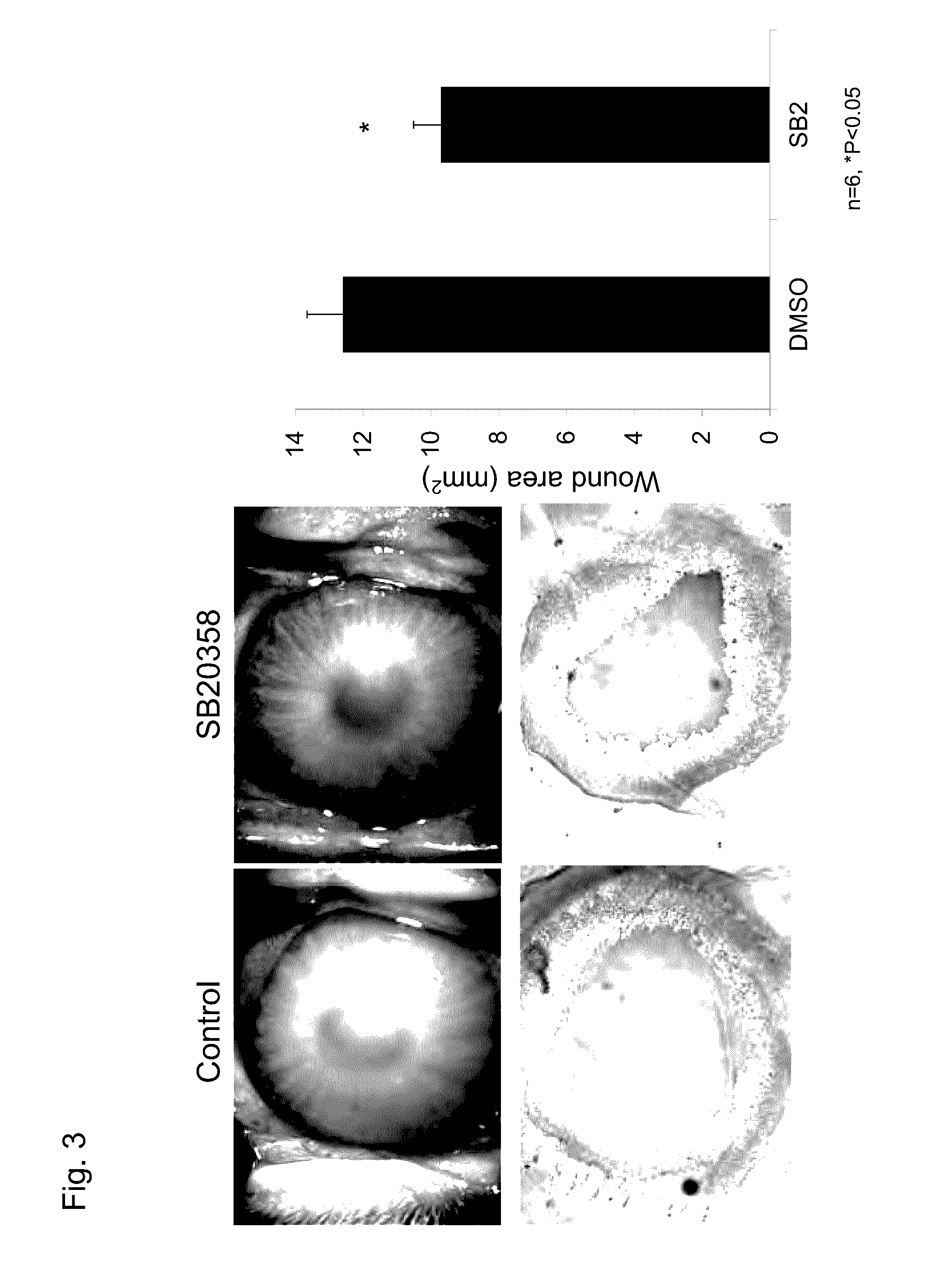Drug for treating corneal endothelium by promoting cell proliferation or inhibiting cell damage
- Summary
- Abstract
- Description
- Claims
- Application Information
AI Technical Summary
Benefits of technology
Problems solved by technology
Method used
Image
Examples
example 1
Suppression of Cyclin Dependent Kinase Inhibiting Factors and Transition in Cell Cycle of Corneal Endothelial Cells by p38 MAP Kinase Signal Inhibition
[0099]The present Example shows that p38 MAP kinase signal inhibition suppresses cyclin dependent kinase inhibiting factors and transitions cell cycle of corneal endothelial cells.
[0100]In accordance with the aforementioned preparation examples, corneal endothelial cells cultured from a cornea for research imported from the Seattle Eye Bank were cultured for use in the following study. A p38 MAP kinase inhibitor SB203580 (13067, Cayman) was added to a cell culture medium. After 20 days, the expression of cyclin dependent kinase inhibiting factors p27, p21, and p16 was studied by Wester blotting. Each of p27, p21, and p16 was suppressed by the addition of SB203580 (FIG. 1 A shows, from the top, p27, p21, p16 and GAPDH. The left lane shows the control, the middle shows 10 μM of SB203580, and the right lane shows 30 μM of SB203580). It i...
example 2
Promotion of Cell Proliferation of Corneal Endothelial Cells by p38 MAP Kinase Inhibitor
[0102]The present Example demonstrate that a p38 MAP kinase inhibitor promotes cell proliferation of corneal endothelial cells.
[0103]Cultured human corneal endothelial cells were stimulated with a p38 MAP kinase inhibitor SB203580. After three days, immunostaining was applied with a cell proliferation marker Ki67 (Dako, M7240) based on the experimental methodology discussed herein. The methodology was as discussed above.
[0104]The results are shown in FIG. 2. Expression of Ki67 was observed in significantly more cells by a stimulation with SB203580 (A, B). Similarly, as a cell proliferation marker, uptake of BrdU was studied after 3 days by ELISA as an indicator. BrdU uptake was significantly promoted by a stimulation with SB203580 (C). The above results show that p38 MAP kinase signal inhibition promotes cell proliferation of corneal endothelial cells.
example 3
Promotion of Corneal Endothelial Cell Proliferation with p38 MAP Kinase Inhibitor in a Partial Rabbit Corneal Endothelial Disorder Model
[0105]The present Example studied whether p38 MAP kinase signal inhibition promotes corneal endothelial cell proliferation in a living organism by using a partial rabbit corneal endothelial disorder model.
[0106]A stainless steel chip with a diameter of 7 mm was immersed in liquid nitrogen and cooled. The chip was contacted with the center portion of a corneal of a Japanese white rabbit (obtained from Oriental Bioservice) for 15 seconds under general anesthesia, such that corneal endothelial cells at the center portion partially fell off. Eye drops of SB203580 adjusted to 10 mM was then administered 4 times a day for 2 days at 50 μl per dose. As a control, eye drops of a base agent were administered in an eye in which a partial corneal endothelial disorder was similarly created, and a picture was taken. Further, the rabbit was euthanized and the corn...
PUM
| Property | Measurement | Unit |
|---|---|---|
| Density | aaaaa | aaaaa |
| Solubility (mass) | aaaaa | aaaaa |
| Cell proliferation rate | aaaaa | aaaaa |
Abstract
Description
Claims
Application Information
 Login to View More
Login to View More - R&D
- Intellectual Property
- Life Sciences
- Materials
- Tech Scout
- Unparalleled Data Quality
- Higher Quality Content
- 60% Fewer Hallucinations
Browse by: Latest US Patents, China's latest patents, Technical Efficacy Thesaurus, Application Domain, Technology Topic, Popular Technical Reports.
© 2025 PatSnap. All rights reserved.Legal|Privacy policy|Modern Slavery Act Transparency Statement|Sitemap|About US| Contact US: help@patsnap.com



